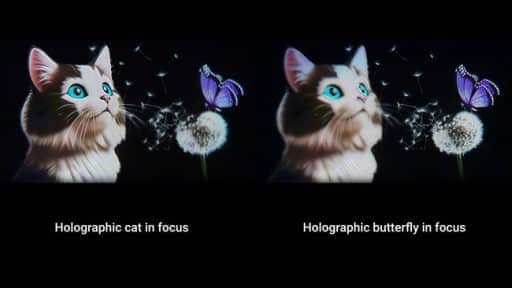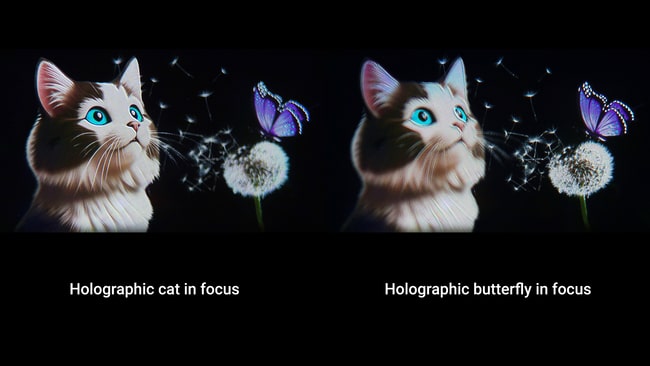In a groundbreaking development, 3D deep-tech start-up VividQ has revealed images of real holograms displayed through state-of-the-art 4K display technology. This marks a significant advance in the realm of computer-generated holography, paving the way for next-generation VR headsets to deliver unprecedented levels of immersion and realism.
VividQ’s technological breakthrough is accompanied by two key commercial milestones. These combined achievements signify a shift in holography from a concept of distant futures to a pivotal technology shaping the next wave of VR and AR experiences.
Holograms, often depicted as grainy, monochrome images in popular media like Star Wars, have now transcended beyond this portrayal. The latest 4K image demonstrates the capability to produce holograms with life-like resolution and vibrant colour. This leap in image quality is crucial across various VR and MR applications, particularly in gaming where holography’s impact is expected to be most pronounced.
Emphasising the market readiness of this technology, VividQ announces a significant partnership with JVCKENWOOD (JKC) utilising their high-performance LCoS (liquid crystal on silicon) displays. This collaboration, one of the two major commercial announcements, is set to revolutionise a myriad of AR and VR applications.
Furthermore, VividQ has entered into a commercial engagement with a leading consumer electronics company, aiming to integrate holographic display technology into future products. This development is a major stride towards bringing holography to mainstream consumers.
VividQ’s CEO, Darran Milne, comments on these developments, noting the evolution from perceiving dynamic, interactive holography as science fiction to a tangible, high-quality reality. He highlights the company’s progress in making holographic display not just feasible but inevitable.
Mark Zuckerberg, CEO of Meta, also recognises holograms as a key element in the future of consumer electronics. In September 2023, he forecasted at the Connect developer conference that holograms will become commonplace in the coming years, a sentiment he reiterated in a podcast interview with Lex Fridman.
Computer-generated holography enhances VR and MR user experiences in three key ways: by enabling built-in prescription correction, allowing dynamic focus shifts between digital objects, and reducing vergence accommodation conflict (VAC). These advancements lead to longer, more comfortable gaming sessions with fewer negative side effects.
VividQ’s Head of Research, Alfred Newman, adds that using JKC’s 4K LCoS technology, they have achieved acuity-limited retinal resolution holograms with unprecedented 3D focus and a broad field of view. This creates a display that matches the eye’s expectations for resolution and real-life focus, offering an unparalleled natural viewing experience.
Yoshio Sonoda, CTO at JKC, expresses excitement about the partnership with VividQ. He emphasises the transformative potential of holography in consumer experiences, particularly in VR, where current limitations are addressed by these advancements.







